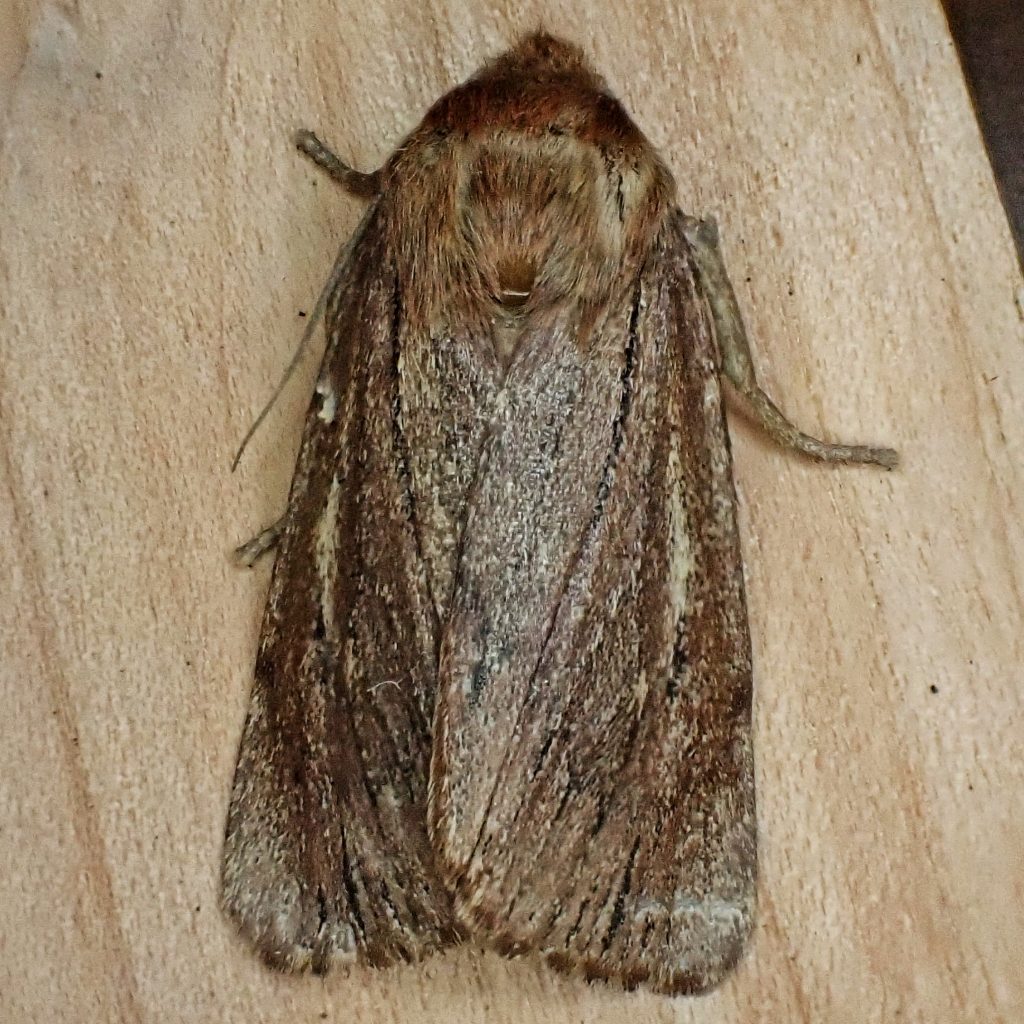
This somewhat drab Noctuid moth has bounced around that family, but, for now, is considered to be in Ufeina, a subtribe in the tribe Xylenini in the subfamily Hadeninae. The moths shown here are the western subspecies of Ufeus satyricus, U. s. sagittarius. Their patterning is sufficiently different from the eastern U. satyricus satyricus that it was thought they were a separate species, but DNA and genitalia are identical.
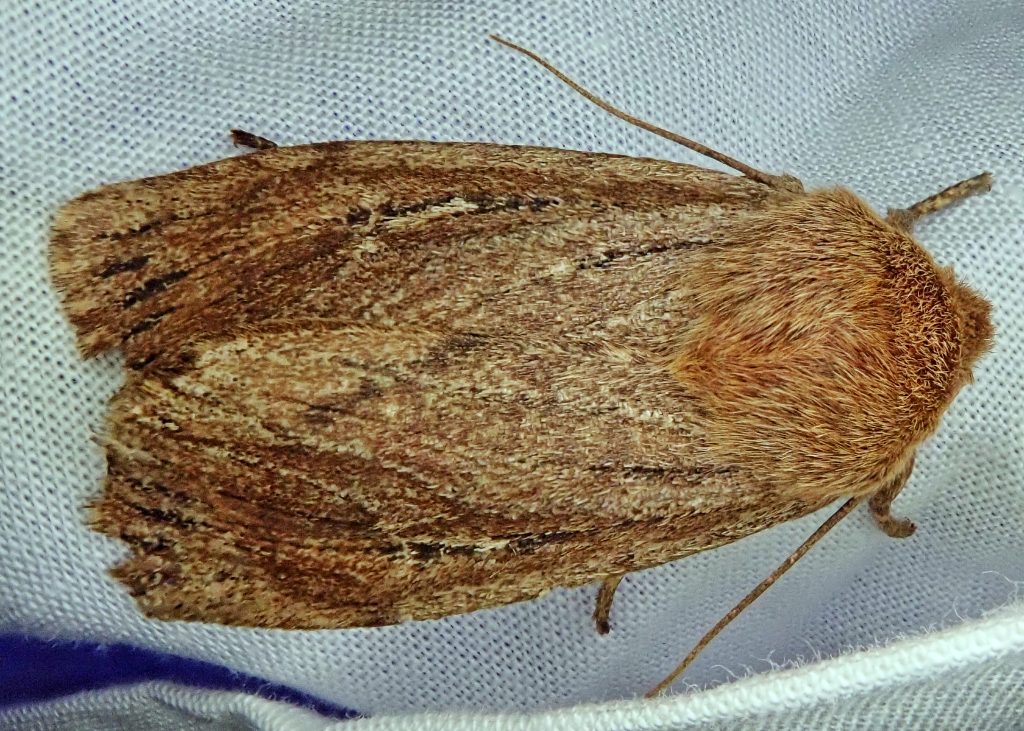
They fly in early to mid spring in our region, emerging from their winter hibernation as soon as the weather begins to warm. They never seem particularly abundant, even in good habitat, but I often see one or two when I run lights near cottonwoods in the spring. They are actually fairly distinctive, but I have to admit that when I haven’t seen one in awhile my first thought is usually that they are a worn or washed out specimen of some other species.
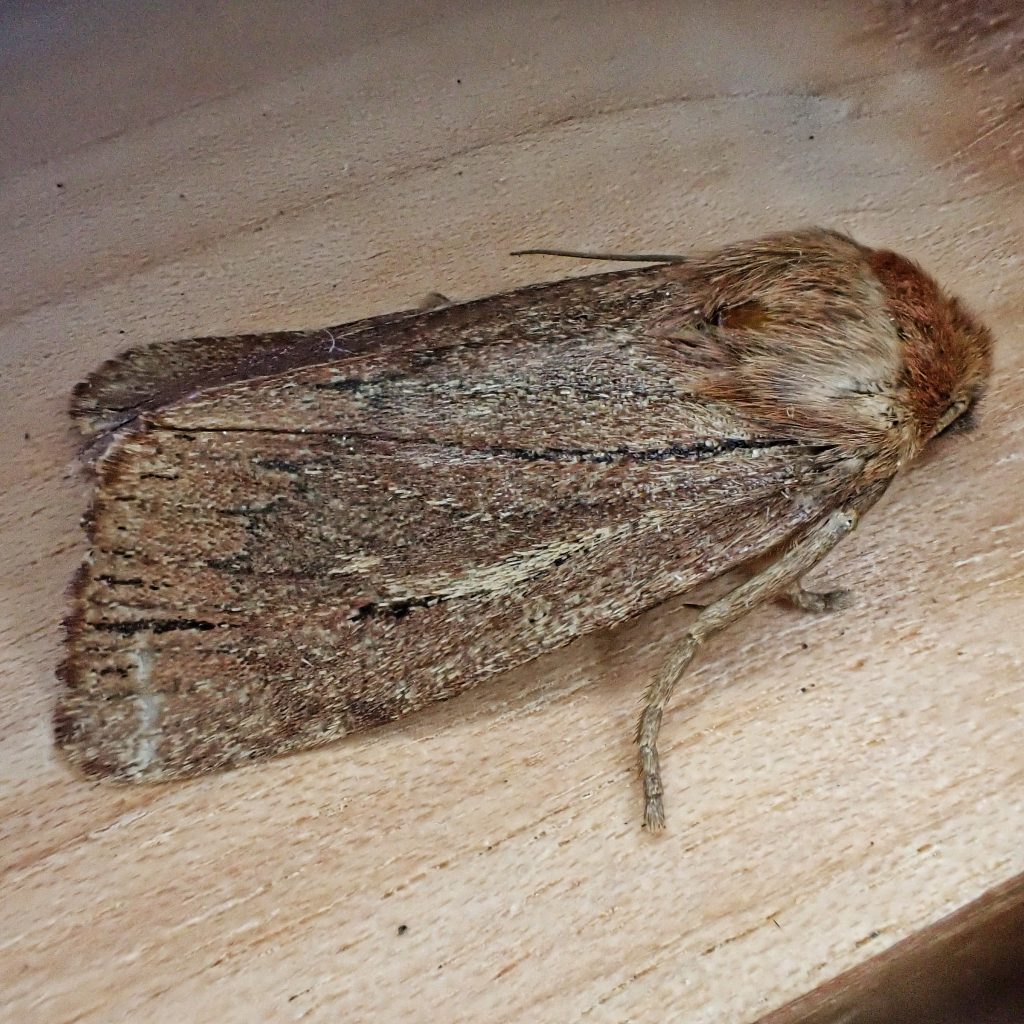
This species is what I think of as a settler. They arrive shortly after full dark, settle quickly on a spot (usually very near the light),remain there for as long as my lights are running, and have to be shaken off the sheets or light support (I use a sheet draped folding stepstool to hold lights and power inverter) when I tear down. I really appreciate the settlers. As I’ve mentioned before I think they may act as a decoy for other moths coming in. And they don’t add to the chaos by flying off when I get near whilst trying to identify the incoming bugs.
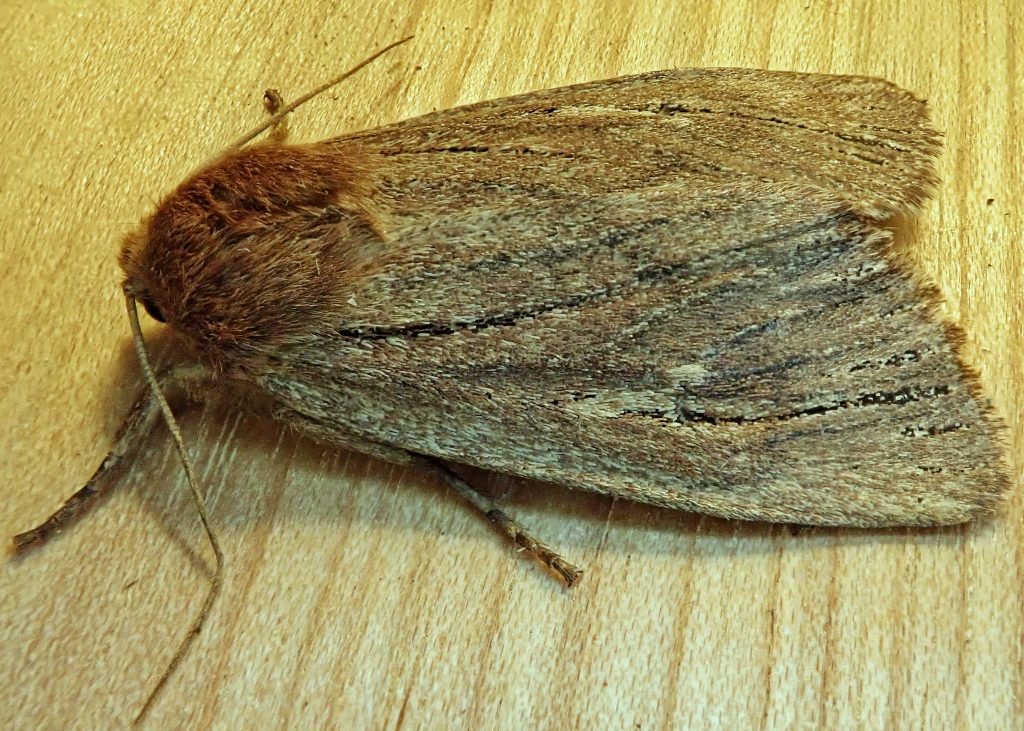
Description– Sexually dimorphic, brown to greyish or reddish brown; females are medium sized (fw length 18-21mm), with black longitudinal (lengthwise rather that crosswise) lines, a pale longitudinal streak mid wing, grey postmedial line, and black spots near the margin; males smaller (fw length 16-18mm) and nearly unmarked, except for a thin black basal dash, and a black line near the apex.
Similar species– U. hulsti flies in mid summer, has dark transverse lines, and lacks a basal dash.
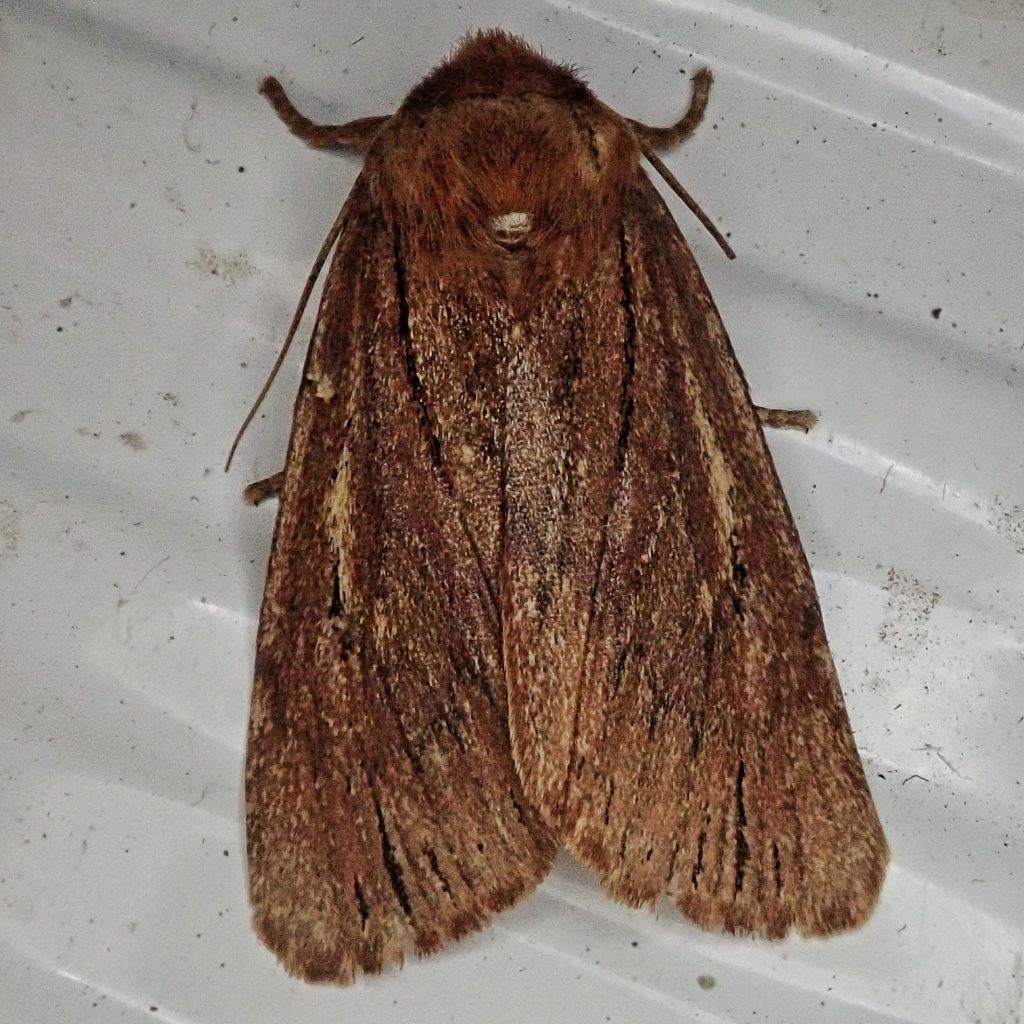
Habitat-Riparian corridors, wetlands, and other areas containing willows and/or cottonwoods, and in woodlands containing aspens.
Range– North America north of Mexico; found region wide in the PNW in appropriate habitat.
Eats– Larvae feed on willows (Salix), and Populus, including cottonwoods and aspen.
Reproduction-Eggs are laid in the spring, larvae pupate in late summer, and adults enclose in early fall to fly for several weeks. They overwinter in hibernation, and emerge in late winter/early spring to breed.
Adults active– Late September to late November, and again in mid January to early May.
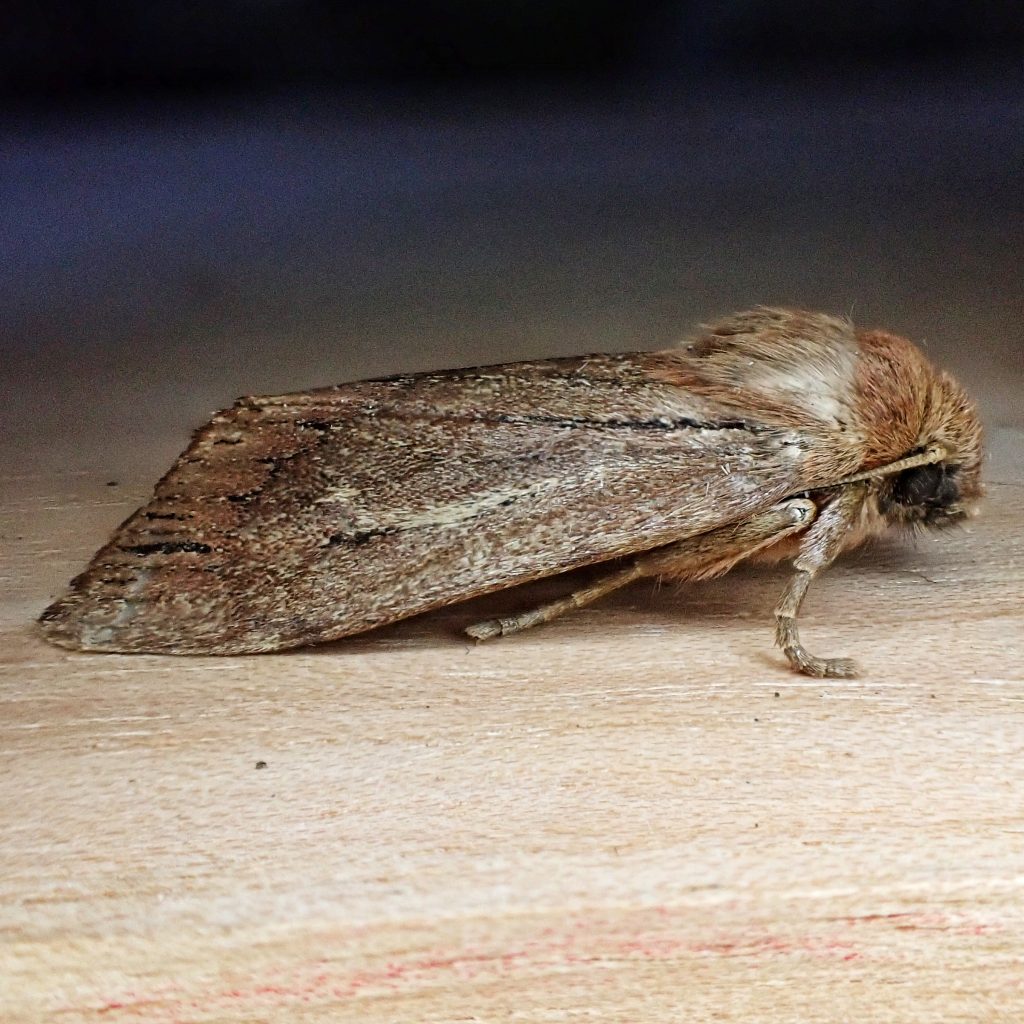
Etymology of names–Ufeus may come the Greek word eupheus meaning ‘active seeking of knowledge’, or euphuēs meaning ‘witty/graceful’. I have read Grote’s original description of this genus and species, and I still have no idea how this may apply, but it may somehow reference or honor the didactic romance ‘Euphues: The Anatomy of Wit’ , written in 1578 by John Lyly, which in turn derived the name of its lead character from Roger Ascham’s ‘The Scholemaster’, published in 1570. The specific epithet satyricus is from Greek by way of Latin, and was a ‘woodland deity typifying lasciviousness’. Again, I’m not sure what that alludes to, but there are also numerous butterflies in the family Nymphalidae (including a subfamily Satyrinae) that utilize that moniker, so perhaps it’s just a literary reference to creatures moving about the woods preoccupied by sex.
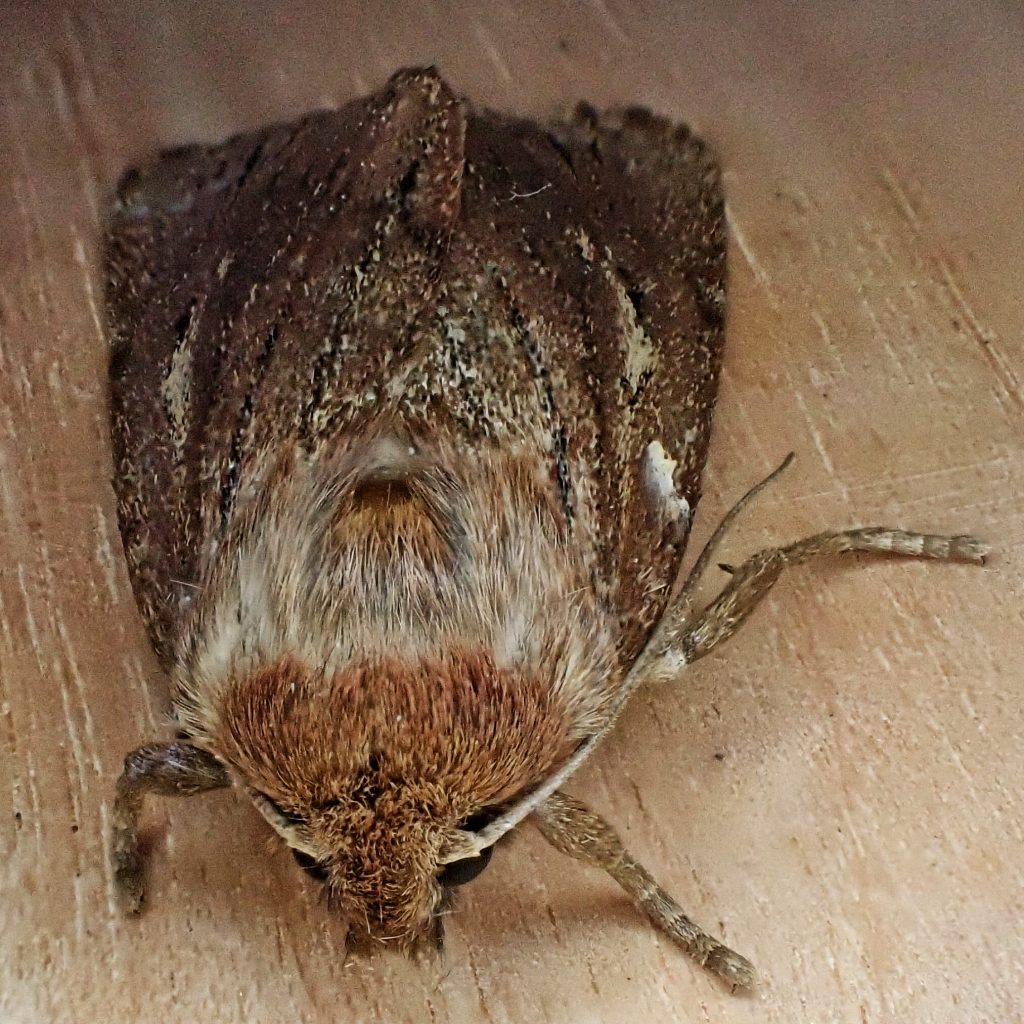
https://bugguide.net/node/view/155549
https://www.ncbi.nlm.nih.gov/pmc/articles/PMC3668379/
https://archive.org/details/bulletinofbuffal12buff?view=theater#page/n112/mode/1up
http://mothphotographersgroup.msstate.edu/species.php?hodges=11051
https://en.m.wikipedia.org/wiki/Euphues
